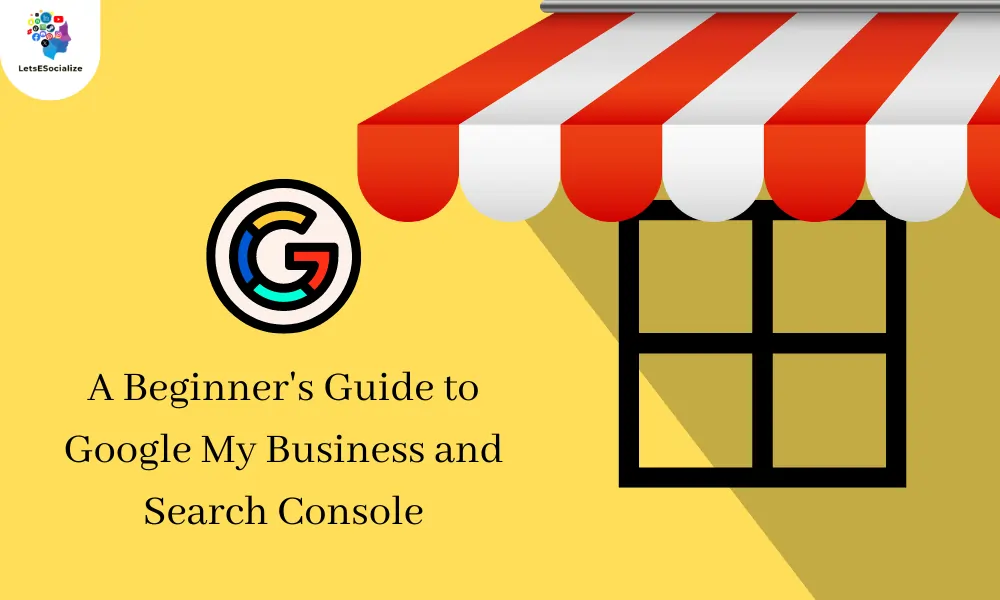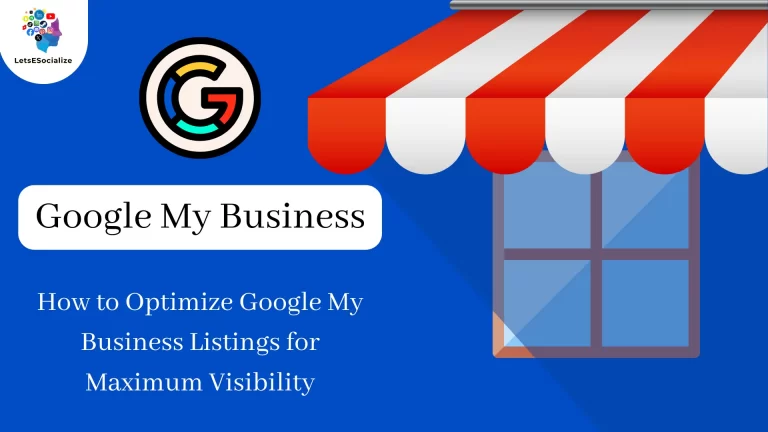Google My Business and Google Search Console are two free tools offered by Google that are important for managing and improving your online presence. Many business owners and website managers don’t take full advantage of these tools or even know that they exist
This beginner’s guide will explain what Google My Business and Search Console are, why you should care about them, and how to set up and use both to better connect with customers and improve your local search engine optimization (SEO).
Table of Contents
What is Google My Business?

Google My Business (formerly known as Google My Business) is a free tool that helps businesses manage their online presence across Google products, particularly Google Maps and Search. It allows you to create and manage your Business Profile, which is what potential customers see when they search for your business on Google. Here are some key things to know about Google My Business:
What it is:
- It’s not your business itself: Think of it as a control panel for your online presence on Google.
- It’s free to use: No hidden fees or subscriptions.
- It helps customers find you: Your Business Profile shows up in Google Search and Maps, making it easier for people to discover your business.
- You can manage your information: Update your address, hours, phone number, website, and more.
- You can showcase your business: Add photos, videos, offers, and posts to attract customers.
- You can interact with customers: Respond to reviews, answer questions, and manage messages.
Benefits of using Google My Business:
- Increased visibility: Get found by more potential customers searching for local businesses.
- Improved brand image: Control how your business appears online and showcase its best aspects.
- Direct engagement: Interact with customers directly through reviews, questions, and messages.
- Valuable insights: Get analytics on how people are finding your business and what they’re interested in.
Who should use Google My Business:
- Any local business with a physical location or service area.
- Businesses that want to attract more customers online.
- Businesses that want to manage their online reputation.
I highly recommend creating a Google My Business account and claiming your Business Profile if you’re a business owner. It’s a free and easy way to improve your online presence and attract more customers.
Also Read – The Complete Guide to Google My Business Reviews
Also Read – The Complete Guide to Google My Business Messaging 2024
Why Google My Business Matters

Google My Business matters for several key reasons, especially for local businesses:
Increased Visibility and Local SEO:
- Prominent placement: Your business listing appears in Google Maps and Search results, often in the top spot below-paid ads, increasing the chances of people finding you when they search for businesses like yours in your area.
- Improved local SEO: Claiming and optimizing your profile strengthens your ranking in local search results, making it more likely your business appears even for broader searches related to your industry.
Direct Customer Engagement:
- Reviews and responses: Customers can leave reviews on your profile, and you can respond directly, building trust and addressing concerns.
- Q&A and messaging: Answer customer questions directly through your profile, providing personalized service and addressing immediate needs.
- Posts and updates: Share offers, events, and important updates about your business directly with potential customers who are already interested.
Credibility and Brand Building:
- Complete and accurate information: Having a verified and detailed profile establishes your business as legitimate and trustworthy.
- Showcase your best side: Include high-quality photos, videos, and descriptions that attract customers and highlight your unique offerings.
- Positive reviews and online reputation: Encourage happy customers to leave positive reviews, which builds trust and encourages others to choose you.
Valuable Insights and Analytics:
- Track performance: See how many people find your business listing, where they come from, and what actions they take, like clicking on your website or calling you.
- Understand your audience: Gain insights into your customer demographics and interests, helping you tailor your offerings and marketing efforts.
- Identify opportunities: Based on the data, you can optimize your profile, content, and offerings to attract your target audience better.
Cost-Effectiveness:
- Free to use: Unlike paid advertising, creating and maintaining a Google My Business profile is completely free, making it accessible to businesses of all sizes.
- High return on investment: The potential benefits of increased visibility, customer acquisition, and brand building make it a valuable tool for maximizing your marketing budget.
Overall, Google My Business is a powerful tool that helps local businesses connect with potential customers, build trust, and grow their online presence. If you haven’t already, I highly recommend claiming your Business Profile and taking advantage of all the benefits it offers.
Setting Up Google My Business
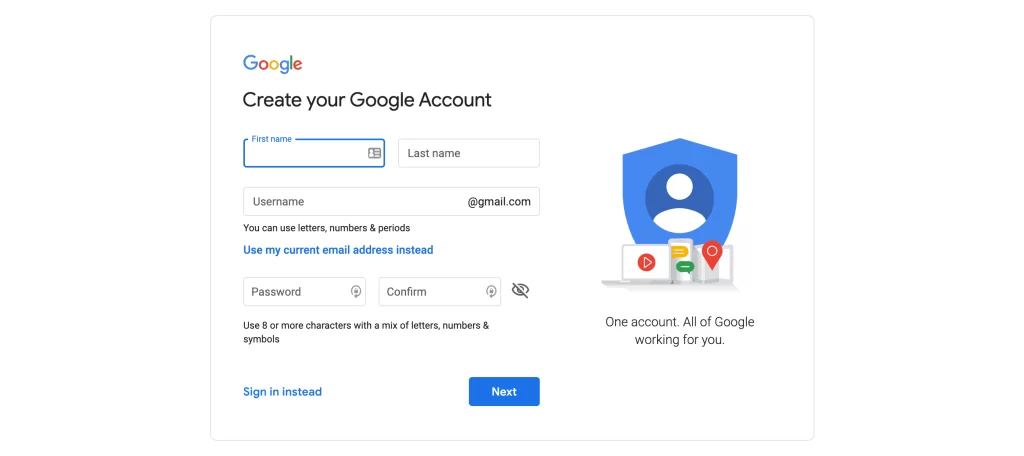
Setting up Google My Business is a straightforward process, but it can seem a bit daunting if you’re unfamiliar with it. Here’s a step-by-step guide to get you started:
1. Sign Up or Sign In:
- Head to the Google My Business website (https://www.google.com/business/) and either sign in with your existing Google account or create a new one if you haven’t already.
- Make sure you’re using the Google account associated with your business email address for better management.
2. Create Your Business Profile:
- Enter your business name and choose the most relevant category that describes your offerings.
- Select whether your business has a physical location that customers can visit or if you serve a specific service area.
- If you have a physical location, enter your complete address. If you serve a specific area, define your service region.
3. Verify Your Business:
- Google needs to verify your business ownership to ensure data accuracy. This usually involves receiving a postcard with a verification code to the address you provided.
- Other verification methods like phone calls or emails might be available depending on your location and business type.
4. Optimize Your Profile:
- Fill in all the essential information like phone number, website, operating hours, description, and high-quality photos showcasing your business.
- Add relevant attributes like veteran-owned, LGBTQ+ friendly, etc., to highlight unique aspects.
- Regularly update your profile with any changes in information or special offers.
5. Engage with Customers:
- Respond to reviews, both positive and negative, in a professional and timely manner.
- Answer questions customers ask through your profile, demonstrating your expertise and helpfulness.
- Post updates, offers, and events to keep your profile active and attract potential customers.
Additional Tips:
- Encourage satisfied customers to leave positive reviews to build trust and credibility.
- Use high-quality photos and videos that capture the essence of your business and offerings.
- Track your profile performance through the insights dashboard to understand how customers find you and what actions they take.
- Utilize Google Posts to share updates, events, and offers directly with your target audience.
By following these steps and consistently engaging with your profile, you can leverage Google My Business to significantly improve your online visibility, attract more customers, and ultimately grow your business. Remember, it’s an ongoing process, so be patient and update your profile regularly to maintain its effectiveness.
Do you have any specific questions about setting up your Google My Business profile? I’m happy to help further!
What is Google Search Console?
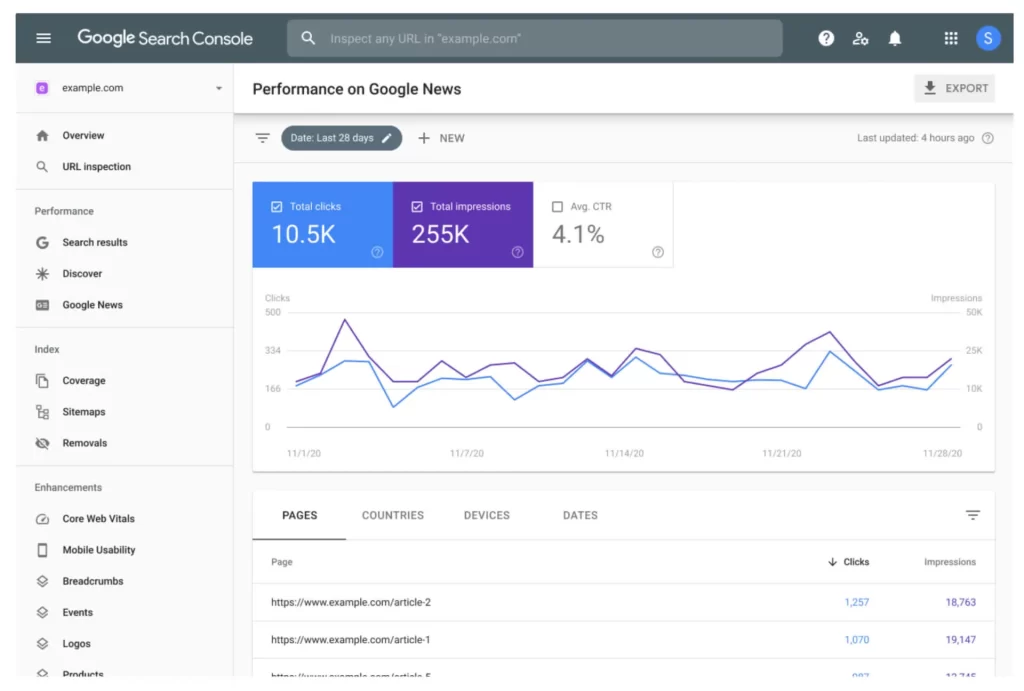
Google Search Console, formerly known as Google Webmaster Tools, is a free web service offered by Google that helps website owners and website managers monitor, maintain, and troubleshoot their website’s presence in Google Search results. It’s a valuable tool for anyone who wants to improve their website’s search engine optimization (SEO) and get more organic traffic.
Here are some key things Google Search Console can help you do:
Monitor your website’s performance in Google Search:
- See how many people are searching for your website using specific keywords.
- Track your website’s impressions, clicks, and average position in search results for different keywords.
- Identify any crawling errors or indexing issues that are preventing your website from being properly indexed by Google.
Optimize your website for search:
- Submit your sitemap to Google to help them find and index your content more efficiently.
- Test how your website looks and functions on mobile devices using the Mobile-Friendly Test.
- Monitor structured data errors that could be preventing your website from appearing in rich search results.
Troubleshoot technical issues:
- Receive alerts from Google about any critical issues that could be affecting your website’s search performance.
- Use the URL Inspection tool to check the indexing status of individual URLs on your website.
- Disavow backlinks from low-quality websites that could be harming your website’s reputation.
Get valuable insights:
- See which pages on your website are performing the best in search results.
- Identify which keywords are driving the most traffic to your website.
- Understand how users are finding your website from different sources.
Who should use Google Search Console?
- Website owners and managers: Anyone who wants to improve their website’s visibility in Google Search should use Search Console.
- SEO professionals: Search Console is an essential tool for anyone who works on SEO for a website.
- Content creators: If you create content for a website, Search Console can help you understand how your content is performing in search results.
Overall, Google Search Console is a powerful and free tool that can help you improve your website’s SEO and get more organic traffic. If you’re serious about getting your website found in Google Search, I highly recommend using Search Console.
Do you have any specific questions about how to use Google Search Console for your website?
Why Google Search Console Matters
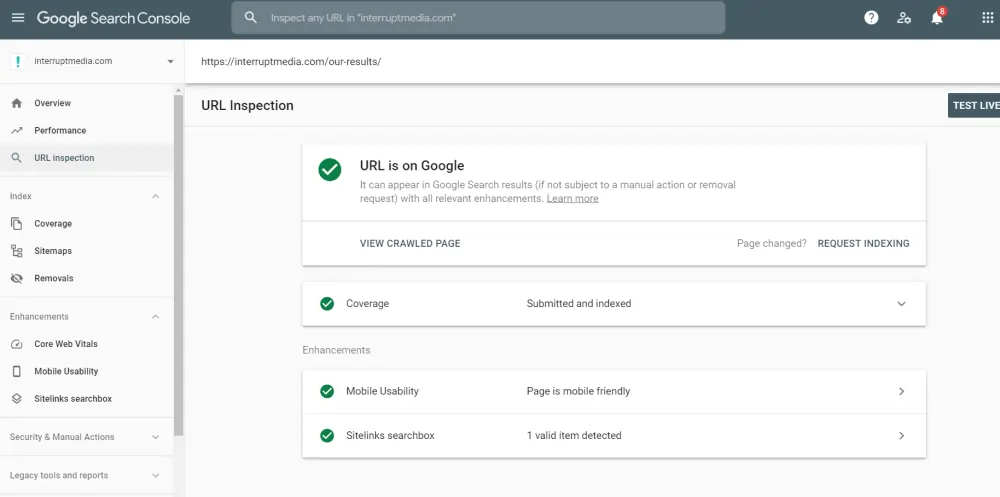
Google Search Console matters for several crucial reasons, particularly for anyone with a website aiming for visibility and organic traffic:
Improved Search Engine Optimization (SEO):
- Visibility and Ranking: Monitor keyword performance, track your website’s ranking for specific terms, and identify areas for improvement in SEO strategies. This valuable data guides you toward optimizing content, title tags, meta descriptions, and overall website structure to rank higher in search results.
- Technical SEO Auditing: Identify and fix technical issues like crawl errors, broken links, and mobile usability problems that hinder search engine indexing and ranking. Search Console acts as a health check, ensuring your website presents itself optimally to search engines.
- Structured Data Insights: Monitor how rich snippets for things like recipes, events, or products appear in search results. Optimize structured data markup to enhance visibility and attract more targeted users.
Enhanced Website Performance and User Experience:
- Mobile-Friendliness Assessment: Test your website’s mobile functionality and responsiveness using Google’s Mobile-Friendly Test. This ensures a seamless user experience across devices, which is crucial for ranking and user engagement.
- Core Web Vitals Monitoring: Track Core Web Vitals metrics like loading speed, responsiveness, and visual stability. These factors significantly impact search ranking and user experience, and Search Console helps you address any lagging areas.
- Security Monitoring: Receive alerts regarding security issues like malware or hacking attempts. Taking swift action through the Search Console safeguards your website and user data.
Valuable Insights and Data-Driven Decisions:
- Traffic Analysis: Understand which keywords drive the most traffic, which pages perform best, and where your audience comes from. This data informs content creation, marketing strategies, and website improvements for better user engagement and conversion.
- User Behavior: Gain insights into how users interact with your website, their search queries, and clicked links. This understanding helps tailor content and optimize user experience for better navigation and conversion.
- Competitor Analysis: Compare your website’s performance with competitors for specific keywords and identify areas for improvement. This helps you refine your SEO strategy and gain a competitive edge.
Overall, Google Search Console empowers website owners with valuable insights, technical monitoring, and SEO guidance. By leveraging its functionalities, you can significantly improve your website’s visibility, attract more organic traffic, and enhance user experience.
Do you have any specific aspects of Google Search Console you’d like to explore further?
Setting Up Google Search Console
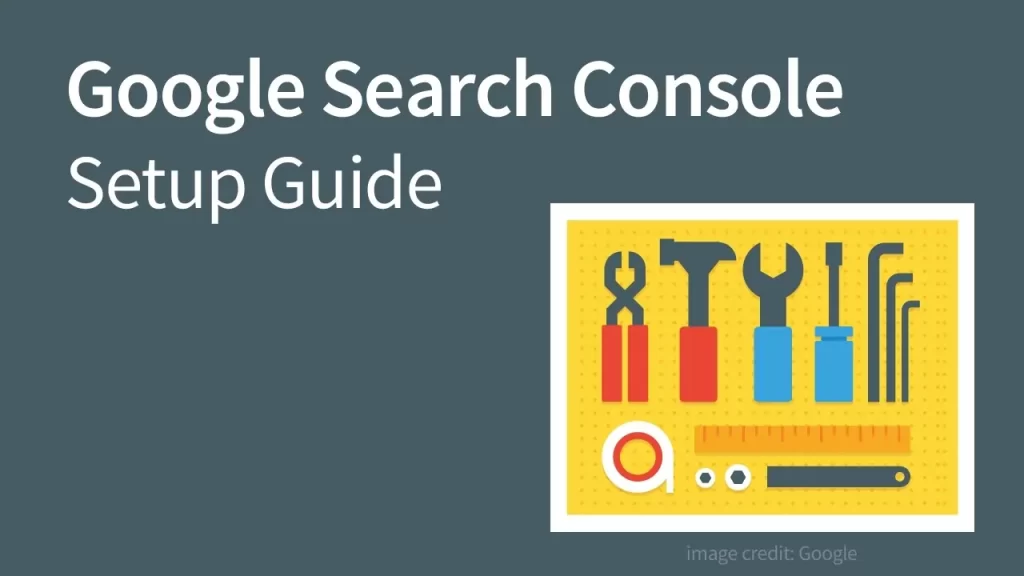
Setting up Google Search Console is a straightforward process, and I can walk you through it step-by-step:
1. Sign Up or Sign In:
- Head to the Google Search Console website (https://search.google.com/search-console/about: https://search.google.com/search-console/about) and either sign in with your existing Google account associated with your website or create a new one if needed.
2. Add Your Website Property:
- Click on “Add property” and choose between adding your domain (recommended for most websites) or a specific URL prefix (for subfolders or subdomains).
3. Verify Website Ownership:
Google needs to confirm you own the website. Choose your preferred verification method:
4. Explore and Utilize Features:
Once verified, you can access various Search Console functionalities:
- Performance reports: Track website impressions, clicks, and average position in search results for different keywords.
- Index coverage: Monitor how Google indexes your website pages and identify any indexing issues.
- URL inspection tool: Check the indexing status and mobile-friendliness of individual pages.
- Mobile usability: Test your website’s mobile responsiveness and identify areas for improvement.
- Core Web Vitals: Track loading speed, responsiveness, and visual stability metrics.
- Sitemap submission: Submit your sitemap to help Google discover and index your content efficiently.
- Rich results testing: Preview how your structured data appears in search results.
- Security and manual actions: Get notified about security issues or manual penalties affecting your website.
Additional Tips:
- Submit a sitemap: This helps Google find and index your website’s pages more effectively.
- Regularly monitor performance: Stay updated on your website’s search visibility and identify areas for improvement.
- Fix crawl errors and indexing issues: Ensure your website’s content is properly indexed by Google.
- Optimize for mobile: Provide a seamless experience for mobile users and improve ranking.
- Leverage data and insights: Use Search Console data to inform your SEO strategy and content creation.
Remember, setting up and utilizing Search Console is an ongoing process. Regularly checking in and utilizing its features can significantly impact your website’s search engine optimization and organic traffic. Do you have any specific questions about setting up or using Search Console for your website?
F & Q’s
Here are some common questions people ask regarding Google My Business and Search Console:
Additional Tips
Here are some other useful tips for getting more from Google My Business and Search Console:
- Keep your business info filled out and update service offerings, images, etc. over time. This helps Google know what your business is about and shows customers your business is legitimate.
- Actively respond and ask customers to leave reviews and upload photos. More 5-star reviews build trust and social proof.
- Use the posts section to highlight sales, events, new menu items, and other happenings to followers. Offer incentives for customers who enable post notifications.
- Check GMB insights monthly to see how actions influence performance metrics like views, calls, directions clicks, queries, etc. Learn what works to get better results.
- Set up email notifications in the Search Console for visibility issues like indexing problems, crawl errors, or security warnings detecting hacking. Fast action prevents lasting damage when issues arise.
- Compare GMB performance to website traffic data in Search Console to make optimization decisions based on the customer journey across channels.
Also Read – How to Export LinkedIn Contacts to Excel: A Step-by-Step Guide
Also Read – Job Scams on LinkedIn: How to Spot and Avoid Them
Conclusion
Google My Business listings and Search Console provide free and valuable self-service tools to take control over monitoring and improving your online presence.
Properly setting up and managing these tools leads to higher local SEO authority, more ways for customers to engage your brand online, valuable performance insights, and faster resolutions to technical problems that might otherwise limit organic growth.
Hopefully, this beginner’s guide provided a helpful introduction to Google My Business and Search Console. Don’t leave these powerful tools sitting unused!

